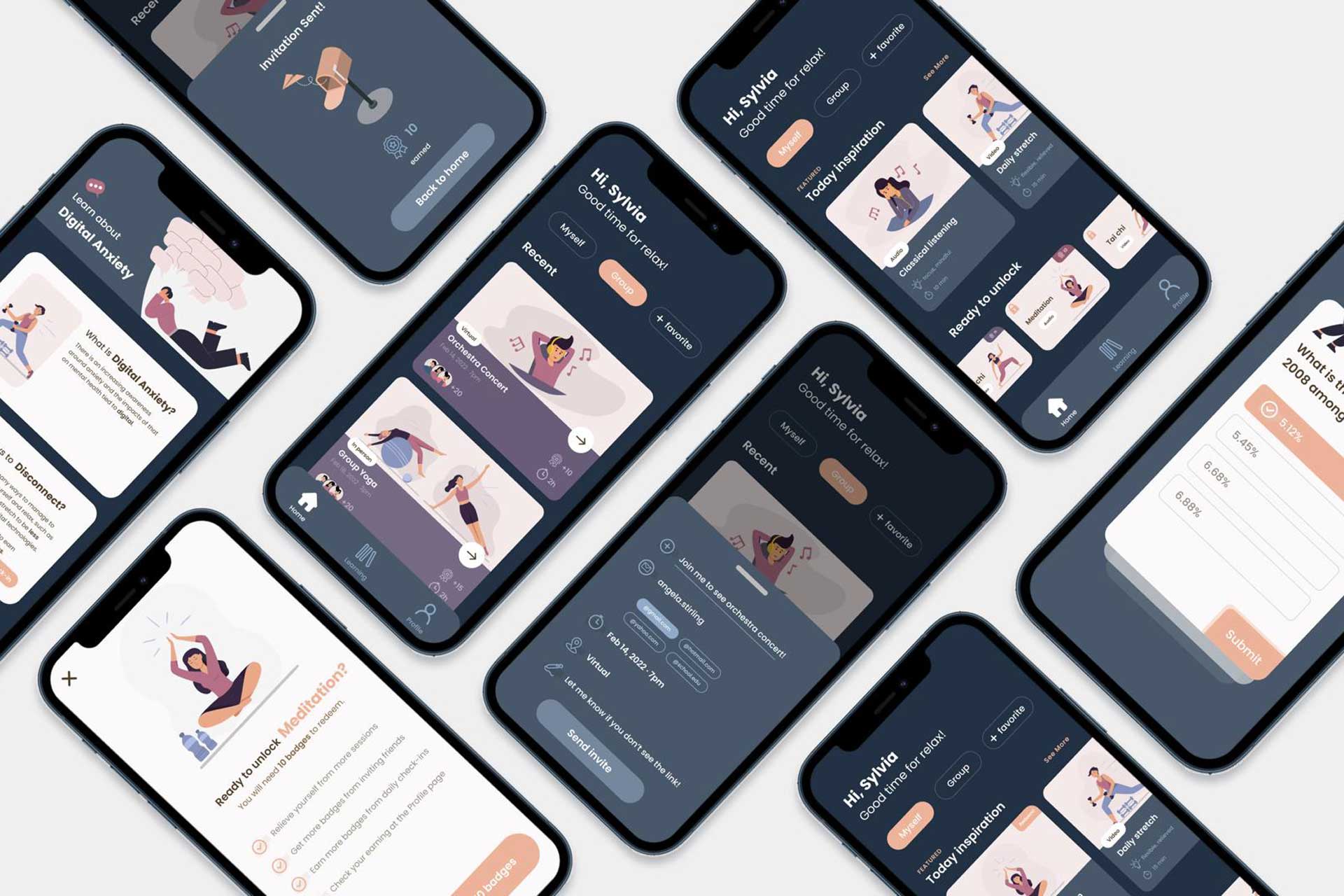Interview with Anqi (Angela) Chen for Calmspace and Argo Data Marketplace

The HiPhi Z Experience by Human Horizons
June 11, 2024
Interview with Bonan Li of Bonan Li Studio
June 11, 2024Anqi (Angela) Chen
Anqi (Angela) Chen is a New York-based UX Designer specializing in AI Design. After earning both her Bachelor’s and Master’s degrees from Cornell University, she has dedicated herself to a design journey that has shaped her goal of creating inventive, impactful, and empathetic solutions.
I’m currently a UX Designer at Veritas Technologies, where my work revolves around crafting refined AI-driven designs that push the boundaries of user experience and business capabilities for complex enterprise data challenges. My approach to design is visually appealing while functional, efficient and user-friendly.
From a daily to weekly work schedule, I’m beyond grateful for the impactful projects that I was honored to work on and collaborated with talented people along the journey. This includes a compelling lifecycle of user experience, from understanding the domain, users, constraints, to exploring design opportunities and crafting solutions through phases.
My favorite kind of design is creative and sustainable. I like so many kinds of design types, keeping myself exploring different genres, while designs that look cool and create sustainable impacts excite me most.
Because of having a background originally in urban planning and environmental science, I am extremely aware if the methods and equipment used in design decision-making are sustainable. In my design space, I often ask myself and others that, are we experimenting on solutions that can support many user types? Does design create effective, adaptable, long-lasting positive impact to our day-to-day life and even the blue planet?
My design process begins with an understanding about several perspectives, from the project objectives, challenges, domain knowledge, to users. An “How Might We (HMW)” question is a must to help me brainstorm and narrow down ideas, as well as determine assumptions and solutions that work best.
At the time of refining the concepts, I employ software or hardwares that best fit to present the designs, and at the same it’s pivotal to acknowledge the potential limitations. Colors, formats, and everything else is what I pay attention to make my designs pixel perfect, while they are practical to achieve the core goals.
I was inspired to design the Calmspace concept in the course of COVID-19 pandemic. Anxiety is a common issue related to the "always connected" existence that most young adults find themselves in. During the pandemic, the limitations to physical contact "forced" them to rely heavily on phones and laptops.
Calmspace is thus a mobile design addressing technology-induced anxiety in young adults who are at school or working in professional industries. It employs a freemium model, providing free well-being features for self-focused and group activities. The innovative reward program encourages users to learn about digital anxiety, earn credits through quizzes and inviting friends for free sessions, and track well-being performance in the profile dashboard.
Calmspace aims to enhance happiness, and natural, proactive interaction for a healthier digital lifestyle. By highlighting both aesthetics and functionality, I was honored to see that Calmspace shapes a creative and impactful legacy in wellness and digital communication as part of the 2024 MUSE Design Awards.
As an advocate of AI Design, I believe that AI plays a vital role in enhancing user insights, personalizing and optimizing user experience. The future of our design industry is unlikely to be replaced by AI, yet the future of AI and design promises continued innovation.
As a UX Designer, I’m excited about closer collaborations where I can focus on humanistic and creative aspects, and allow AI to handle more complex and data-driven workloads. The design process will remain transparent, ethical and advance to meet user demands efficiently.
First, users are key to a good design. It is unlikely to design a visually appealing and functional product without getting to know your users thoroughly. I always do research first to familiarize myself with the market and user groups. Design is ultimately going to address their needs and improve experiences.
Additionally, what also makes design hard to be replaced by AI is its beauty to outline human aesthetics. So I highly recommend aspiring designers to get familiar with design tools (both softwares and hardwares), and practice whenever you can.
A good designer is also a great storyteller. Beyond design space, we love to hear about the stories behind each design, what, when and why we design them.
Winning Entries
Calmspace | 2024
Calmspace, a mobile design addressing technology-induced anxiety in young adults who are at school or working in professional …
(Read more at MUSE Design Awards)
Argo Data Marketplace | 2024
Argo is a data marketplace platform that facilitates confidential health-related data sharing by adopting Blind Learning …
(Read more at MUSE Design Awards)
Anqi (Angela) Chen
Anqi (Angela) Chen is a New York-based UX Designer specializing in AI Design. After earning both her Bachelor’s and Master’s degrees from Cornell University, she has dedicated herself to a design journey that has shaped her goal of creating inventive, impactful, and empathetic solutions.
Read more about Anqi (Angela) Chen's interview for the 2024 NY Product Design Awards!



